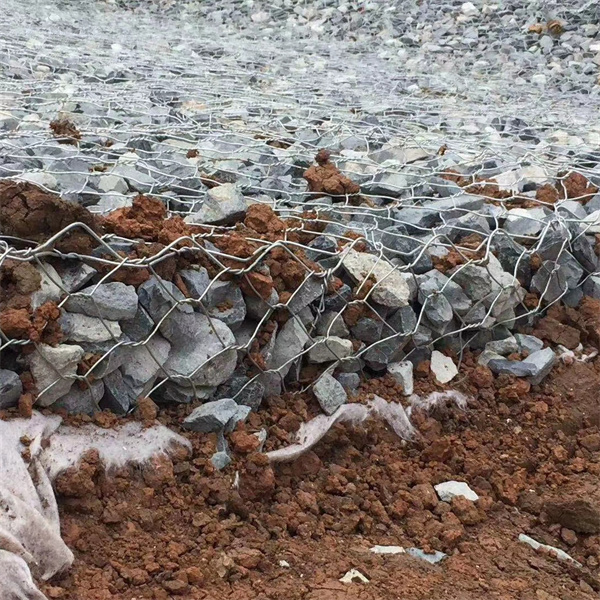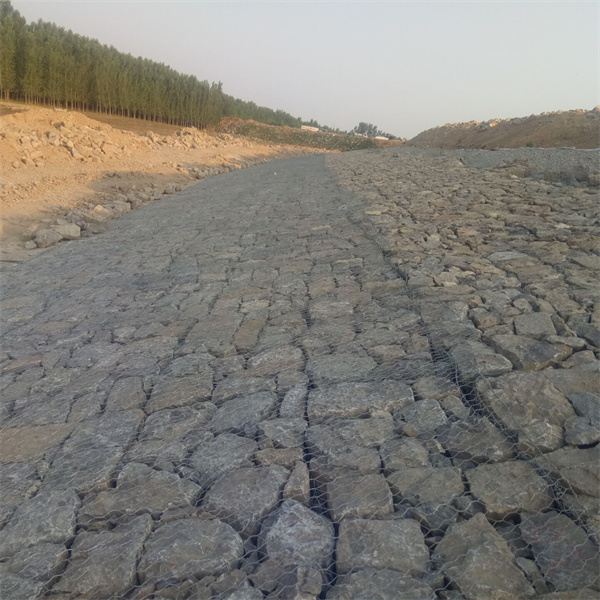Februari . 16, 2025 10:16 Back to list
Galfan Coating Hexagonal Wire Gabions for retaining wall
Gabion walls, an innovative solution in contemporary landscaping and architecture, have a legacy that traces back centuries yet continues to evolve with modern design and engineering principles. These structures, characterized by their robustness and versatility, are gaining traction as favorable options for both functional and aesthetic applications in various environments.
In terms of architectural aesthetics, gabion walls have transitioned from purely functional barriers to sophisticated design elements. Modern designers and architects leverage the rugged texture and natural hues of stone-filled cages as striking contrasts or subtle complements to urban settings. The versatility in material choice means that the visual appearance of gabion walls can be customized to meet specific aesthetic needs or brand visual themes, whether it’s sleek minimalism or rustic charm. The expertise required in designing gabion walls lies in selecting appropriate materials and understanding the geotechnical properties of the construction site. Professionals in civil engineering and landscape architecture evaluate factors such as soil type, intended load-bearing requirements, and environmental conditions to design walls that are both effective and enduring. Innovations in wire technology have also enhanced the longevity and environmental resistance of gabion walls, allowing them to withstand harsh climates and corrosive conditions. Trust in gabion walls is reinforced through numerous successful applications worldwide, from hillside reinforcements to large-scale flood defense projects. Their reliability is backed by extensive research and testing in geotechnical engineering, proven in both academic studies and field performance. When properly installed, gabion walls have a long lifespan, due to the durability of the materials and their inherent design properties which dissipate stress and adapt to shifts in the terrain. In summary, gabion walls offer a multifaceted solution to both environmental and design challenges. Their combination of practicality, aesthetic potential, and environmental friendliness make them a preferred choice for projects ranging from garden landscaping to critical infrastructure. Their effectiveness in various applications, coupled with the authority of expert design and robust field performance, ensures that gabion walls remain a trusted and innovative approach in modern engineering and architecture.


In terms of architectural aesthetics, gabion walls have transitioned from purely functional barriers to sophisticated design elements. Modern designers and architects leverage the rugged texture and natural hues of stone-filled cages as striking contrasts or subtle complements to urban settings. The versatility in material choice means that the visual appearance of gabion walls can be customized to meet specific aesthetic needs or brand visual themes, whether it’s sleek minimalism or rustic charm. The expertise required in designing gabion walls lies in selecting appropriate materials and understanding the geotechnical properties of the construction site. Professionals in civil engineering and landscape architecture evaluate factors such as soil type, intended load-bearing requirements, and environmental conditions to design walls that are both effective and enduring. Innovations in wire technology have also enhanced the longevity and environmental resistance of gabion walls, allowing them to withstand harsh climates and corrosive conditions. Trust in gabion walls is reinforced through numerous successful applications worldwide, from hillside reinforcements to large-scale flood defense projects. Their reliability is backed by extensive research and testing in geotechnical engineering, proven in both academic studies and field performance. When properly installed, gabion walls have a long lifespan, due to the durability of the materials and their inherent design properties which dissipate stress and adapt to shifts in the terrain. In summary, gabion walls offer a multifaceted solution to both environmental and design challenges. Their combination of practicality, aesthetic potential, and environmental friendliness make them a preferred choice for projects ranging from garden landscaping to critical infrastructure. Their effectiveness in various applications, coupled with the authority of expert design and robust field performance, ensures that gabion walls remain a trusted and innovative approach in modern engineering and architecture.
Latest news
-
Wire Mesh Thickness Impact on Gabion Wall Load Bearing
NewsAug.12,2025
-
Ultimate Guide to Hexagonal Gabion Box
NewsAug.12,2025
-
Types of Rocks for Gabion Baskets Durability and Aesthetics
NewsAug.12,2025
-
Standard Gabion Box Sizes and Their Industrial Applications
NewsAug.12,2025
-
Easy Guide to Building Garden Gabion Cages at Home
NewsAug.12,2025
-
Drainage Solutions for Gabion Mesh Structures
NewsAug.12,2025
-
Visualizing Gabion 3D Integration in Urban Landscapes with Rendering
NewsJul.23,2025
Manufacturer of Silk Screen Products
QuanhuaProvide high-quality products and services to global customers.






